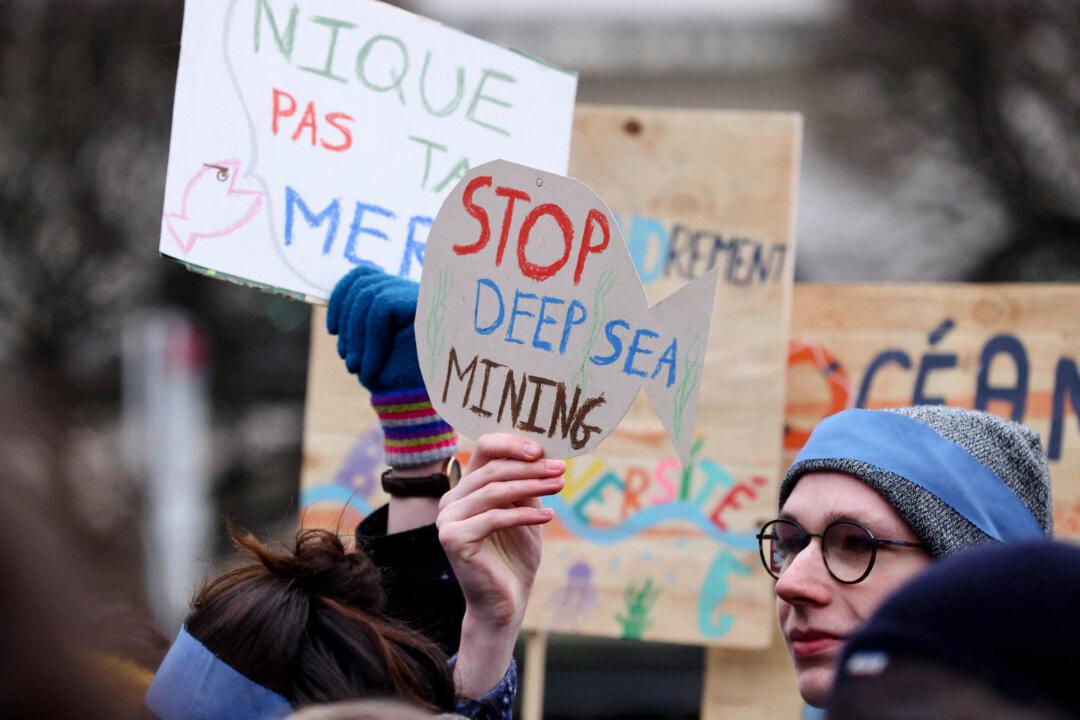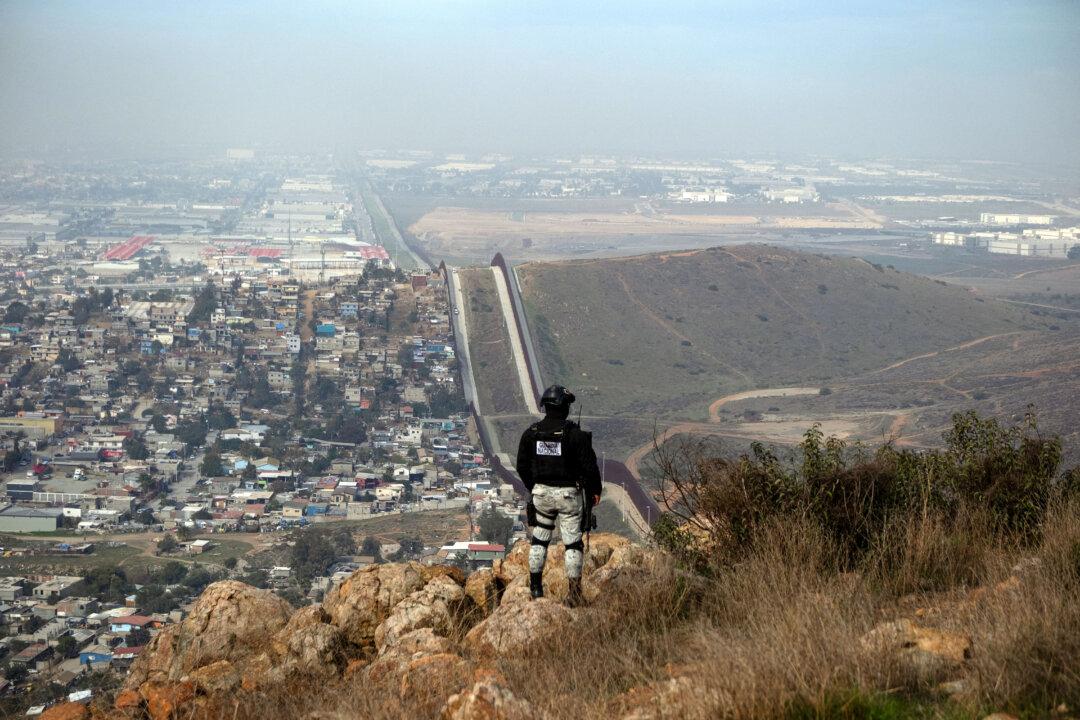Deep-sea mining advocates say mining the world’s oceans is a cheaper and cleaner way to extract essential minerals, including copper, cobalt, nickel, zinc, silver, gold, and rare earth elements, reducing the United States’ dependence on China in the process.
Detractors say that deep-sea mining is not commercially viable and will cause lasting harm to the world’s last untouched regions, destroying aquatic organisms that have yet to be discovered by humans.
“Nothing pleases our foreign adversaries like China more than America surrendering to radical preservationists, NGOs, and foreign-funded donors who wage lawfare against sound, multiple-use resource-management policies,” Rep. Paul Gosar (R-Ariz.) told attendees at an April 29 hearing of the House Committee on Natural Resources.
Using AI to Avoid Undersea Life
New technological developments have made it possible to mine these seabeds using underwater vehicles that hover over deposits with a suction device that works like a vacuum cleaner, extracting the nodules together with sediment and organic materials and piping them up to a surface vessel for processing. Once the mineral deposits are separated, the remaining sediment and organic matter would be pumped back down to the ocean floor.“Our underwater robots hover to collect the mineral-rich nodules from the seabed,” Oliver Gunasekara, CEO and cofounder of Impossible Metals, told attendees at the hearing. “Through an AI-driven selective harvesting, we pick up modules individually, avoiding all visible life and leaving 60 percent of the modules untouched to preserve the marine biodiversity.”
“Today, a new land-based mine in the U.S. takes 29 years,” Gunasekara said. “Seabed mining is the vital alternative; we can deliver critical minerals at [a] commercial scale in just three years, 10 times faster, 10 times cheaper, 10 times lower impact, and without relying on China.”
“America’s mineral dependence is reversible,” Barron said. “And we can change this without sacrificing American landscapes or communities.”
“Four days sailing from San Diego lies the Clarion-Clipperton Zone, where poly metallic nodules sit 2.5 miles deep on the sea floor, and they’re rich in nickel and cobalt and manganese and copper,” Barron said.
“These nodules hold more of these four minerals than all known land-based reserves combined, and just 1 billion tons of the 21 billion tons of nodules in the [Clarion-Clipperton Zone] could supply over 450 years of the United States manganese needs, 150 years of cobalt needs, and 80 years of nickel needs developed over 20 years.”
Critics Say ‘Math Does Not Add Up’
Critics of deep-sea mining argue that the technology is unproven, not commercially viable, and that undersea mining will harm fragile aquatic environments.“[Deep-sea mining] carries grave risks to our oceans and communities with no credible evidence of return on investment,” Rep. Maxine Dexter (D-Ore.) said at the congressional hearing.
“Supporters of deep-sea mining argue it will meet an urgent demand for minerals like cobalt, nickel, copper, and manganese—currently essential for electric vehicles and renewable energy—but the math simply does not add up.”
“Claims that deep-sea mining will solve supply chain needs for rare earth elements or national security critical materials are exaggerated and grossly misleading,” she said.
“These minerals are not found in significant quantities on the ocean floor, and extracting them from nodules is inefficient and environmentally devastating.”
Duncan Currie, legal adviser at Deep Sea Conservation Center, testified that undersea mining is “unnecessary” because only four metals—copper, cobalt, nickel, and manganese—can be practically extracted through deep-sea mining, and the market for these minerals is volatile, with prices currently at a low point.
“EV batteries are moving rapidly to lithium-ion phosphate technology, which uses no cobalt or nickel,” Currie said.
“It will be monumentally expensive to build all of the ships, mining equipment, and monitoring systems necessary for this [deep-sea mining] industry. “The junior companies before you today have weak financing and sub-scale, unproven technology that cannot be relied on.”
“The deep sea is a rich source of these minerals, which can be found on the seafloor in the form of polymetallic nodules, polymetallic sulphides, and cobalt-rich ferromanganese (Fe-Mn) crusts.”
But concerns about the environmental impact remain.
“The deep seafloor of the Pacific Ocean is one of the most poorly explored regions on Earth with very little known about the benthic animals that live beyond 1,000 meters (3,000 feet) in the PCZ,” the report reads.
“Recent surveys of crust communities in the Papahanaumokuakea Marine National Monument in the Northwestern Hawaiian Islands have found dense beds of corals, sponges, and other invertebrates living on crusts at these depths, many of which are new to science and are thought to be long-lived and fragile.”
However, Gunasekara told hearing attendees that alternatives to mining, such as recycling, would fall short of meeting U.S. manufacturing needs as the demand for critical minerals accelerates.
“We can meet the shortfall, but only with new minerals, because recycling, substitution, or demand reduction fail to meet America’s needs,” he said.
“There just is not enough material in circulation for recycling to move the needle in the next 25 years ... the only remaining option would be a diminished economy.”







